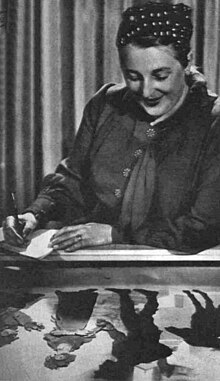Now we are starting to get to the meat of it all. Before we even get into production there are several steps that come first. So I will have to break this into several posts. This one is: So, a client has said "I have some money, let's do this"
Being offered work is fantastic! But you have to know when a project is just not a fit. Several factors can come into play on the road to saying "yay or nay".
Sometimes, you and the client really want to work together but you just can't make your budget, schedule or labor balance out. If you leave that client with a good feeling. That you really tried to make that project work. They will probably reach out to you in the future with terms that will fit you better. I have seen, and had this happen. Remember the post on "connections"? It all leads back to making connections, keeping connections. So this part of the Pre-production journey is the "Will it fit?" (teehee) part. The upcoming parts will be:
- Part 2 - Contracts
- Part 3 - Schedules
- Part 4 - Setting up Trackers
- Part 5 - Finding the right artist for the right job
Some things to consider before you say YES to that project.
More explained thoughts to ponder while deciding if that project is a good fit.
2. How long will the project take to complete? A rough schedule will help you decide if this is a "regular job" or "rush job" How many hours will each process take. Which will tell you how many people it will take. Hours(X)People=Final output. The schedule is what I always use to figure out my rates, overhead and profit.
3. Once I know how many hours this job will take. That helps me calculate how many people I will need for the project. Then I can take the budget and calculate a fair rate. Since I have actually worked in most departments I am pretty good at calculating how long each process will take. If I don't know...I ask. Better to be more informed and to treat your workers fairly. So once I know how many hours each process will take. I then can figure out how much a person can earn "per hour" on this project. Then I know its a fair livable wage. You don't have to pay hourly. I just like to have that at my base. Each project is different you could have employees, freelance, contract. Then you can decide how to break down payment dates for the contract. I like to do it per Milestone delivery in my schedule. That way each worker is motivated to hit that Milestone.
4. Now calculate what your overhead will be(overhead would be calculating the bills you need to pay out during the duration of the project - Power, phone, taxes and then the all important profit). Now flesh out the schedule to make sure you and the client can come to an agreement.
In regards to the problems we have all seen in the industry. I can't even say "recent problems" as a story like Telltale seems to pop up every six months or so. Studio's letting artists go with no notice. Studio's closing and more focused on getting that last show/game out. Burning artists out.
Now sometimes a project will be a tough one. Due to client demands, scheduling errors etc. If you find you work at a studio where "OMG WE NEED TO GET THIS DONE ASAP" is a constant theme. You will find yourself no longer loving what you do. Becoming numb. That is called burnout. Believe it or not. Not every studio is like that and you need to find out what studio fits your lifestyle. There are all kinds out there. Listen to word of mouth from other artists. They will tell you the real deal. But make sure you talk to more than one person. As an artist myself I can tell you sometimes we love to blow up a story. That's what we are at our heart...storytellers. Don't forget that...and do NOT forget your worth.


























